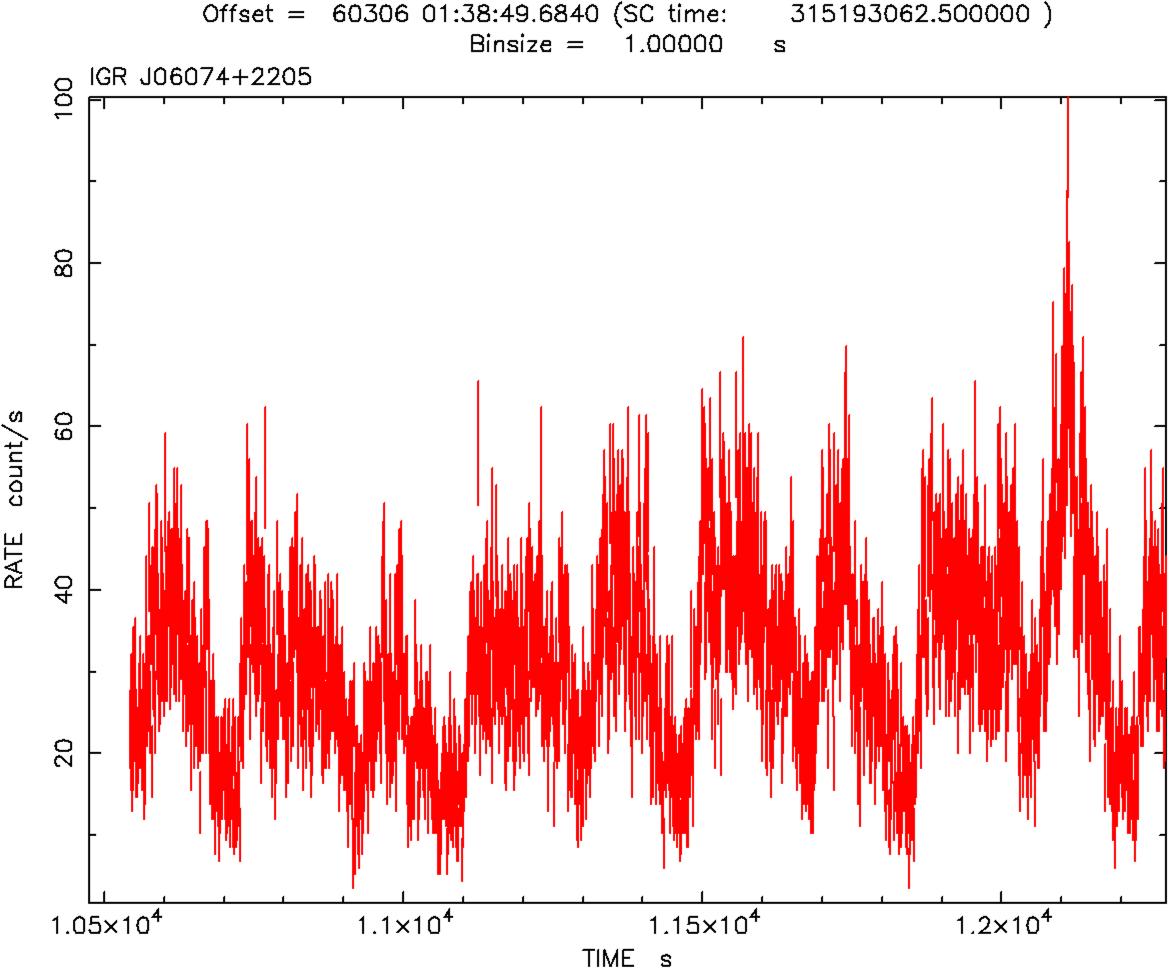NICER / ISS Science Nugget
for January 4, 2024
A "shy" X-ray pulsar slowly makes itself known
Discovered serendipitously as a pinpoint X-ray source in an image acquired in 2003 by the European INTEGRAL satellite, the object designated IGR J06074+2205 has been slow to reveal its secrets. Within a few years of its discovery, ground-based telescopes identified a likely visible-light counterpart -- a "type Be" star, one that exhibits certain emission lines in its optical spectrum -- and high-resolution X-ray imaging with NASA's Chandra telescope bolstered that association. The natural interpretation was that IGR J06074 is a member of the class of objects known as high-mass X-ray binaries (HMXBs), in which a neutron star accretes matter from a massive companion star in a long-period orbit. Notably, the emission lines from Be stars are thought to originate in an "excretion" disk: a sometimes unstable wind or outflow from the young star that is confined to its equatorial plane. Finally, in 2018, faint X-ray pulsations with a repetition period of 372 seconds were discovered from IGR J06074, confirming its nature as a Be/HMXB pulsar, but additional key information, such as the orbital period, remained elusive.
In March 2022, June 2022, and October 2023, JAXA's MAXI payload on ISS detected weak outbursts from IGR J06074 lasting approximately two days each. The 80-day interval between the first two detections was suggestive, because it falls near the middle of the range of orbital periods among the several dozen known Be/HMXBs. An intriguing model for periodic outbursts from these systems is that accretion -- and thus X-ray emission -- occurs during the neutron star's closest approach to the companion in a typically elliptical orbit, interacting and perhaps even plunging through the massive star's excretion disk. The possible 80-day periodicity for IGR J06074 prompted a prediction by the MAXI team: that the next outburst would occur around the 28th of December.
Sure enough, on December 26, MAXI reported to NICER that emission from the direction of IGR J06074 was detected, and NICER executed a series of observations over nearly two days. The deeply modulated 372-second pulsations were clearly detected in every observation. Thus, the orbital period of IGR J06074 is now confirmed, and is consistent with an established trend in the Be/HMXB population that links neutron-star spin and orbital periods in what is known as a "Corbet diagram". Future high-precision timing of the pulsations with NICER promises a refined measurement of the orbital parameters, including eccentricity and better predictions for the dates of future outbursts.

Individual X-ray pulses from the high-mass X-ray binary pulsar IGR J06074+2205, as measured with NICER on 28 December, 2023, in a single exposure lasting 1800 seconds. The rate of photon detections is binned shown in 1-second bins. Two peaks, one narrow and one wide, are seen during each full rotation of the accreting neutron star every 372 seconds.
<< Previous
Main Index
Next >>